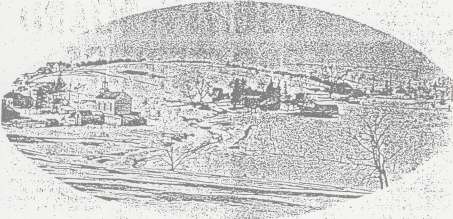![]()
Hardin Misc. histories & photos |

Hardin c1910
This picture of Hardin, taken about 1910 by Rex Hinman, was located, on the original plat, partly in Allamakee County and partly in Clayton. The owners at the time of platting, January 9, 1854, were Leonard B. Hodges and Joseph and Almirah Collins over the line. This was a point of some note for a number of years prior ro this date, it being one of four pst offices in Allamakee County in 1851, the others being Postville, Lansing, and Tom Corwin (later Johnsport). The postmaster at that date was L.B. Hodges. Additions were platted in 1856, Hardin Center in 1857, East Hardin in 1859; but were mostly vacated and the village was no larger when this picture was taken than 30 years previous. There was at one time a large grist mill located on the Clayton side of the line. The first school in Post Township was at Hardin and was built of oak logs, 16 x 20 in the fall of 1849, mainly by the efforts of Leonard B. Hodges of Hardin who also taught the first school there. The last school held in the house was taught by Wm Larrabee of Clermont. Today all that remains are a few crumbled foundations.
- source of photo & article: newspaper clipping, unknown paper
- contributed by Debra Richardson
|
|
|
|
|
.... but never forgotten

Hardin 2000
photographer Debra Richardson
Continue to more Hardin photos & history
Return to 'Other' History index page